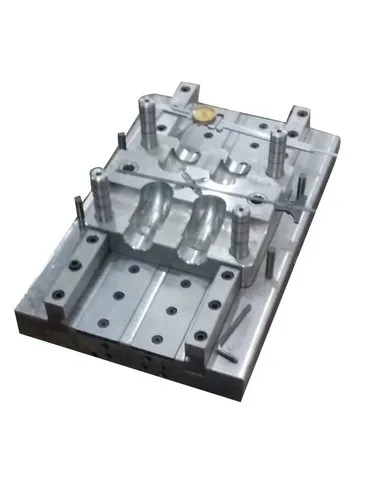Injection molding and blow molding are two popular manufacturing processes used for shaping materials like PVC (Polyvinyl Chloride), a versatile thermoplastic material. While both processes are used to create durable and complex products, they differ in terms of their applications, processes, advantages, and limitations.
1. Overview of Injection Molding for PVC
Injection molding is a process in which PVC pellets are heated until molten and injected into a mold cavity under high pressure. Once the mold is filled, the material is allowed to cool and solidify, taking the shape of the mold.
Applications:
Used for producing solid, rigid parts and components.
Common in industries such as automotive, consumer goods, medical devices, and electronics.
Ideal for small to medium-sized parts with high precision.
Process:
PVC is fed into a barrel where it is heated and melted.
The molten PVC is injected under pressure into a mold cavity.
After cooling, the mold is opened, and the finished part is ejected.
Advantages of Injection Molding for PVC:
High precision and repeatability: Can produce complex shapes with tight tolerances.
Fast production rates: Ideal for mass production of large volumes.
Cost-effective for high-volume production: The cost per unit decreases as production volume increases.
Design flexibility: Capable of producing intricate and detailed parts.
Material efficiency: Minimal waste as excess material can be reused.
Limitations:
Tooling cost: Initial mold costs can be high due to the precision required.
Size limitations: Not suitable for producing large hollow parts.
2. Overview of Blow Molding for PVC
Blow molding is a manufacturing process used to create hollow parts by inflating a heated tube of PVC (known as a parison) inside a mold. The mold then cools the material to solidify the shape of the product.
Applications:
Used to produce hollow parts like bottles, containers, and tanks.
Common in industries such as packaging, automotive, and consumer goods.
Ideal for producing large or hollow products.
Process:
PVC is heated and extruded into a hollow tube (the parison).
The parison is placed in a mold, and air is blown into it to inflate it to the shape of the mold.
Once cooled, the mold is opened, and the product is ejected.
Advantages of Blow Molding for PVC:
Ideal for hollow shapes: Perfect for creating products like bottles, tanks, and containers.
Cost-effective for large volumes: Like injection molding, blow molding becomes more cost-efficient at larger production scales.
Lightweight products: Blow-molded products are often lighter than those made by injection molding.
Material savings: Minimal waste due to the nature of the process.
Limitations:
Complex shapes are difficult: Blow molding is less suitable for parts with intricate internal features.
Limited material types: Blow molding is generally suited for thermoplastics like PVC but may not be suitable for all materials.
Slower cycle times for some applications: While still efficient, blow molding is not always as fast as injection molding for certain product types.
3. Key Differences Between Injection Molding and Blow Molding for PVC
| Factor | Injection Molding | Blow Molding |
|---|---|---|
| Product Type | Solid, rigid parts and components | Hollow parts like bottles, containers, tanks |
| Material Form | PVC pellets are melted and injected into a mold | PVC is extruded into a parison and inflated with air |
| Process Complexity | More complex with precision required for parts | Simpler for producing hollow parts, less precise |
| Tooling Cost | Higher due to the precision of molds | Lower for certain product types, but still significant |
| Cycle Time | Fast, efficient for small parts | Generally slower for certain applications, but good for large-volume hollow parts |
| Applications | Automotive parts, medical devices, small consumer goods | Packaging, containers, hollow automotive parts |
4. Choosing the Right Process for PVC Manufacturing
Use Injection Molding for PVC when:
You need to create solid, high-precision parts.
The part requires intricate details, thin walls, or high mechanical strength.
High production volumes are required for small to medium-sized parts.
Cost-efficiency is crucial for large-scale production runs.
Use Blow Molding for PVC when:
You need to create large, hollow parts such as bottles, containers, or tanks.
The part must be lightweight but durable.
The design is less complex, and the goal is efficient mass production.
You want to minimize material waste.
5. Conclusion
Both injection molding and blow molding are effective manufacturing techniques for PVC, each offering unique advantages based on the design and application requirements. Injection molding excels in producing high-precision, solid parts, while blow molding is ideal for creating large, hollow items. Understanding the differences and selecting the right process based on part design, production volume, and material efficiency will help ensure the best results for PVC manufacturing projects.


